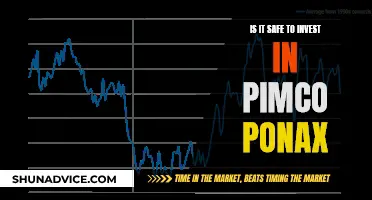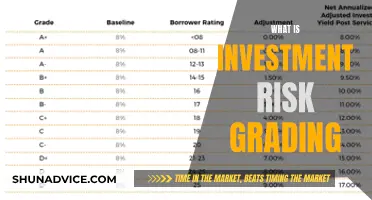
Investing is a great way to build wealth over time and there are a variety of investment options to choose from, each with its own pros and cons. The best investment for you will depend on your financial goals, risk tolerance, timeline, and other factors. Here are some popular investment options to consider:
1. Stocks: Stocks offer the potential for high returns over the long term but come with higher risk and volatility.
2. Exchange-Traded Funds (ETFs): ETFs provide diversified investment options by pooling together various securities, such as stocks, bonds, or commodities. They trade on major stock exchanges and can be bought and sold throughout the trading day.
3. Mutual Funds: Similar to ETFs, mutual funds pool money from multiple investors to invest in a diversified portfolio of stocks, bonds, or other assets. Mutual funds are typically priced once a day and may have higher minimum investment requirements.
4. Bonds: Bonds are loans made to companies or governments and are considered less risky than stocks. They offer capital preservation and income generation but may have lower long-term returns.
5. High-Yield Savings Accounts: Some online banks offer competitive interest rates on savings accounts, providing a relatively safe and accessible investment option.
6. Certificates of Deposit (CDs): CDs are a type of savings account that offers a fixed interest rate for a specified period. They can be a good option for guaranteed returns, especially when interest rates are high.
7. Real Estate: Investing in real estate, such as rental properties or through real estate investment trusts (REITs), can provide stable income and diversification to your portfolio.
8. Cryptocurrencies: Cryptocurrencies like Bitcoin and Ethereum are a relatively new investment option that can be added to a diversified portfolio if you have knowledge of the market.
Remember, investing involves risk, and it's important to understand each investment option thoroughly before committing your money. Diversification and aligning your investments with your financial goals and risk tolerance are key to building a successful investment portfolio.
| Characteristics | Values |
|---|---|
| Risk | Low, Medium, High |
| Returns | Low, Moderate, High |
| Time Horizon | Short-term, Long-term |
| Accessibility | Easy, Difficult |
| Volatility | Stable, Fluctuating |
| Liquidity | Liquid, Not Liquid |
| Safety | Safe, Risky |
| Diversification | Diversified, Not Diversified |
| Tax Implications | Taxable, Tax-Free |
What You'll Learn

Stocks
There are two main kinds of stocks: common stock and preferred stock. Common stockholders are entitled to vote at shareholder meetings and receive dividends, while preferred stockholders usually don't have voting rights but are prioritized in terms of dividend payments and asset liquidation if the company goes bankrupt.
Investing in stocks can create wealth over long periods, and dividends play a crucial role in this equation. Stocks offer investors the greatest potential for growth over the long haul, and investors willing to hold stocks for extended periods are generally rewarded with strong, positive returns.
However, it's important to remember that stock prices can fluctuate and there is no guarantee of growth. The value of stocks can be influenced by factors inside the company, such as a faulty product, or by external events beyond the company's control, such as political or market events.
Before investing in stocks, it's recommended to research the company and its performance history, including reviewing annual reports, prospectuses, and stock reports. Additionally, it's essential to assess your financial situation, risk tolerance, time horizon, and investment knowledge when considering stock investments.
India: A Risky Investment Bet You Should Avoid
You may want to see also

Mutual funds
There are several benefits to investing in mutual funds:
- Diversification: Mutual funds allow investors to achieve diversification faster and more cheaply than buying individual securities. By pooling money, investors can spread their investments across many different securities, reducing the risk of losing money.
- Professional management: Mutual funds provide a relatively inexpensive way for small investors to benefit from full-time, professional money management. The fund managers research opportunities, select securities, and monitor performance according to the fund's stated objectives.
- Accessibility: Mutual funds are highly liquid and can be bought and sold relatively easily on major stock exchanges. They also provide an accessible way for investors to access a wide range of assets and investment strategies that would otherwise be difficult or impossible to achieve on their own.
- Economies of scale: Mutual funds buy and sell large amounts of securities at a time, resulting in lower transaction costs compared to what individual investors would pay.
- Transparency and regulation: Mutual funds are subject to regulations that ensure accountability and fairness for investors. The component securities of each fund are also available for investors to view across many platforms.
However, there are also some drawbacks and risks associated with investing in mutual funds:
- No FDIC guarantee: Mutual funds do not have a guaranteed return, and there is a possibility that the value of the fund may depreciate.
- Cash drag: Mutual funds typically maintain a larger percentage of their portfolio in cash to accommodate withdrawals, and this cash earns no return.
- Higher costs: Mutual funds often have various fees, commissions, and other expenses that can reduce overall investment returns. Actively managed funds, in particular, tend to incur higher transaction costs.
- Dilution: Successful funds that grow too big may struggle to find suitable investments for all the new capital, leading to dilution.
- Limited trading flexibility: Unlike stocks and ETFs, mutual fund shares can only be traded once daily after the markets close.
- Tax implications: Mutual funds may trigger capital gains taxes when the fund manager sells a security, and there may be tax implications when withdrawing funds.
Overall, mutual funds can be a good investment option for those looking to diversify their portfolios and benefit from professional management. However, it is essential to carefully research and compare different funds and understand the associated fees and risks before investing.
Invest in Franklin India Prima Plus: A Guide
You may want to see also

Index funds
The primary advantage index funds have over their actively managed peers is lower fees. So, if actively managed funds don’t outperform their passive peers, more investors are asking why they are paying fund managers so much more in fees each year. Using SPIVA data as a proxy, which compares the performance of actively managed funds with specific benchmarks, 79% of actively traded funds had underperformed the S&P 500 in the previous five years.
- Set a goal for your investments. Before you start investing in index funds, it's important to know what you want your money to do for you. If you're looking for a short-term place to park your money and earn a bit of interest, you may be more interested in certificates of deposit, savings accounts or money market funds.
- Decide where to buy them. You can purchase an index fund directly from a mutual fund company or a brokerage. When you're choosing where to buy an index fund, consider fund selection, convenience, trading costs, impact investing, and commission-free options.
- Choose your investment platform. Begin by selecting an online brokerage or investment platform. Some of the best online brokerage platforms provide strong customer support, robust research, and analytical tools.
- Open and fund an account. Once you’ve chosen a platform, you’ll need to open an account. This typically involves providing personal information, setting up login credentials, and completing a questionnaire about investment goals and risk tolerance. After that, you’ll need to deposit funds.
- Select an index fund. Research different funds to understand their performance history, management fees, and the indexes they track. Consider diversifying your portfolio by investing in several index funds.
- Buy shares. With your account funded, you can now buy shares of your chosen fund. Most platforms allow you to purchase directly through their website or app with just a few clicks.
- Keep an eye on your investments. While index funds are typically long-term investments, it's wise to review your portfolio periodically to ensure it aligns with your financial goals.
Understanding Managed Portfolio Investment Strategies and Benefits
You may want to see also

Bonds
Like a loan, a bond pays a periodic interest payment known as a coupon to the bondholder. At the end of the bond's life, called maturity, the principal amount is paid back to the investor. For example, a $10,000 bond with a 10-year maturity date and a 5% coupon rate would pay $500 per year for a decade, after which the bond's original $10,000 principal would be repaid.
Types of Bonds:
There are various types of bonds, including:
- Government Bonds: These are issued by federal, state, and local governments and are considered among the safest investments due to the high credit rating of governments. Examples include Treasury bills, notes, and bonds, as well as Treasury Inflation-Protected Securities (TIPS).
- Corporate Bonds: Companies issue these bonds when they need to raise money for projects or ventures. They can be high-yield or investment-grade, depending on the credit rating of the company.
- Municipal Bonds: Issued by states, cities, and local governments, these bonds fund projects such as building schools or highways. They offer federal tax exemptions on interest paid.
- Mortgage-Backed Securities (MBS): These are bonds created by securitizing mortgage payments of property owners.
- Asset-Backed Securities: Similar to MBS, these bonds are created from car payments, credit card payments, and other loans.
Benefits of Investing in Bonds:
Risks of Investing in Bonds:
While bonds are safer than stocks, they still carry some risks. There is a possibility that the borrower will go bankrupt before paying off the debt, or they may be unable to make interest payments on time. If you try to sell a bond before its maturity, you might face difficulties, especially if interest rates have gone up. Inflation can also reduce the purchasing power of the fixed income received from the bond over time.
Factors to Consider:
When investing in bonds, it is important to evaluate the creditworthiness of the issuer. The interest rate of a bond is tied to the issuer's creditworthiness—the higher the rating, the lower the risk of default. U.S. government bonds are typically considered the safest, followed by state and local government bonds, and then corporate bonds.
It is also crucial to understand the impact of interest rates on bond prices. Bonds often lose market value when interest rates rise, as new bonds entering the market offer higher coupon rates, making them more attractive to investors.
Vanguard's Investment Manager Selection: The Key Criteria
You may want to see also

Exchange-traded funds (ETFs)
ETFs are ideal for investors with a long time horizon. They are also a good option for investors who don't have enough money to meet the minimum investment requirements for a mutual fund, as an ETF share price may be lower.
ETFs are available on most online investing platforms, retirement account provider sites, and investing apps, and most of these platforms offer commission-free trading. After creating and funding a brokerage account, investors can search for and buy and sell ETFs as desired.
ETFs can be structured in several ways, including:
- Passive ETFs: These aim to replicate the performance of a broader index, such as a diversified index like the S&P 500.
- Actively managed ETFs: These do not target an index; instead, portfolio managers make decisions about which securities to buy and sell. Actively managed ETFs have benefits over passive ETFs but charge higher fees.
- Bond ETFs: These are used to provide regular income to investors, with distributions depending on the performance of underlying bonds, which may include government, corporate, and municipal bonds.
- Industry or sector ETFs: These track a single industry or sector, like automotive or energy, and aim to provide diversified exposure to that industry.
- Commodity ETFs: These invest in commodities like crude oil or gold and can diversify a portfolio.
- Currency ETFs: These track the performance of currency pairs and can be used to speculate on exchange rates based on political and economic developments.
- Bitcoin ETFs: These expose investors to bitcoin's price moves in their regular brokerage accounts.
- Ethereum ETFs: These provide a way to invest in ether, the currency native to the Ethereum blockchain, without directly owning the cryptocurrency.
Some popular ETFs include:
- SPDR S&P 500 (SPY): The oldest and most widely known ETF, which tracks the S&P 500.
- IShares Russell 2000 (IWM): An ETF that tracks the Russell 2000 small-cap index.
- Invesco QQQ (QQQ): Known as "cubes," this ETF tracks the tech-heavy Nasdaq 100 Index.
- SPDR Dow Jones Industrial Average (DIA): Known as "diamonds," it tracks the 30 stocks of the Dow Jones Industrial Average.
- Sector ETFs: ETFs that track individual industries and sectors such as oil, energy, financial services, real estate investment trusts, and biotechnology.
- Commodity ETFs: These track commodities, including gold, silver, crude oil, and natural gas.
- Country ETFs: These funds track the primary stock indexes in foreign countries but are traded in the U.S. in dollars, such as China, Brazil, Japan, and Israel.
ETFs are considered a good investment option because they provide exposure to a diverse mix of asset classes, including domestic and international stocks, bonds, and commodities. They typically have lower operating expense ratios (OERs) than actively managed mutual funds and are widely considered more tax-efficient.
Debenture Investment Guide for Indians: A Secure Option
You may want to see also
Frequently asked questions
The safest investments include savings accounts, CDs, money market accounts, and government bonds. These options are safer because they are FDIC-insured, meaning you won't lose your deposits. However, you do run the risk of losing purchasing power over time due to inflation if rates are too low.
Medium-risk investments include corporate bonds, dividend stocks, and real estate. Corporate bonds are not FDIC-insured, so there is a chance the company will run into financial trouble and default on the bonds. Dividend stocks are considered safer than growth stocks but are still subject to market risk. Real estate is often viewed as a safer, more stable investment than stocks but can be less liquid.
Higher-risk investments include stocks, stock-based ETFs, and mutual funds. Stocks are not risk-free and can fluctuate dramatically over short periods. ETFs and mutual funds are less risky than individual stocks because they provide diversified investment options, but they are still subject to market risk.
The best investment for you depends on your financial situation, risk tolerance, timeline, and investment goals. It's important to evaluate your comfort with risk and create a financial roadmap before investing. Diversification is also key to reducing risk.
To get started with investing, you'll need to pick a strategy, decide how much to invest, open an investment account, and understand your investment options. There are many online resources and robo-advisors that can help you through the process.







